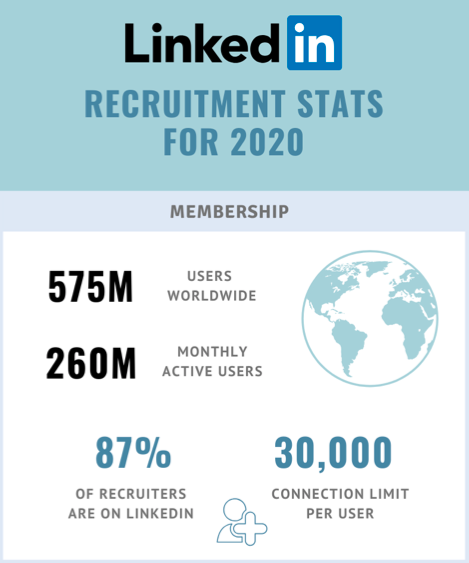Any business manager wants their business to run as smoothly as possible. This doesn’t just mean finding the right workflow management software; it means finding the right people to work for your business.
Establishing a talent pipeline – a pool of quality candidates – is one way of doing this. It helps cut down search times for candidates, resulting in a better experience both before and after the hiring process. But building this talent pipeline is a fine art – read on for some tips on making your talent pipeline as strong as possible.
1. Brush Up on Your Brand
Start with an essential question: do candidates actually want to work at your company? Don’t forget that while you’re assessing a candidate, they’re also assessing you. That’s why it’s important to look at how your business is perceived.

There are a few different ways to check this out. If your business has social media accounts, see what kind of engagement – if any – you’re getting from people. If you can see what your employees are saying about you (without compromising their privacy) this provides an excellent insight into areas for improvement. Online reviews – particularly ones detailing interactions with your staff – are also highly valuable, as they help improve your customer experience.
By having a clearer picture of your business, you can ensure that you’re ready to seek out new talent for it.
2. Consider Your Business Goals
Once you understand your reputation, it’s a good idea to look at what your business is doing over the next few years – and what your business wants to achieve. This is because a business’s choices have tangible impacts on who you hire.
Business expansions are areas of particular interest, whether this is the business as a whole or just one department. Location changes or potential business mergers should also be considered. By thinking about these aspects now, you can get a clearer picture of the roles your talent pipeline will fill. If there’s still some ambiguity about how many people you need, cast a wider net than a narrower one. It’s always better to have too many potential candidates than too few.
3. Start Sourcing Candidates
With a clear idea of who you need, it’s time to start finding the candidates in question. This is an ongoing process, and there are several places you can look.
LinkedIn is an excellent starting point; as a business-focussed social media platform, it lets you easily find all of the qualities you’re looking for in a potential candidate. You can narrow the field even further by searching for keywords relevant to your business. Crucially, you can reach out to potential candidates and signal your interest in working with them going forward. This in turn can spur a candidate’s interest in what you do.

Business and networking events are another great source of talent. These allow you to find people who aren’t necessarily on LinkedIn or other social media sites. Alternatively, they can help you get a more accurate impression of a candidate’s personality – something that online profiles and conversations don’t provide.
Remember that your own business can help source potential candidates. You may already have a database of candidates that you can revisit. Even if they weren’t a good fit for your company before, there may be new opportunities for them now – especially if they’ve gained new skills.
You might also want to consider a referral scheme. Encourage your employees to refer potential candidates to you – and reward them if you hire the person recommended.
4. Talk to Your Candidates
Once you’ve established a pipeline of candidates, it’s vital you carefully maintain your connections with them. Too much interaction can feel like a sales pitch, while too little can cause candidates to lose interest.
A good strategy is to focus on the candidate’s interests rather than your own. Send them content that’s relevant to them, and congratulate them on achievements and milestones that they talk about. Build upon conversations you’ve had in the past to show you’re invested in them as an individual. Be prepared to answer questions about what you do (even if it’s obscure subject matter like iso certification).
If you’re not sure how best to communicate with a specific candidate, don’t be afraid to ask them. You might find someone on LinkedIn, for example, who prefers to communicate via email every month or so. This consideration is also likely to inspire positive associations in that candidate.
5. Consider Your Pipeline’s Diversity
Today’s businesses should be prepared to consider – and accommodate – a diverse workforce. By actively considering people from varying backgrounds, you may find talented workers you’d otherwise overlook.

Employee resource groups are one way of building a diverse workforce, and exist within businesses across multiple industries. If you already have one in your business, you may want to consult it while troubleshooting the hiring process.
If you’re simply looking to broaden your candidate search, one tactic is to think about your search terms. Searching for people in employee resource groups is a good option, as is searching for particular characteristics. Moreover, searching for pronouns can help you find candidates from the LGTBQ+ community, as many people within this group prefer to state them explicitly.
If you’ve established a diverse workforce already, consider sending a diverse range of employees to represent your business (provided they’re willing and able to do so). This can give a positive impression of your business to potential candidates. Work to go beyond an impression; if your business doesn’t embrace diversity as an idea, your new employees will rightfully seek employment elsewhere.
6. Offer Ongoing Development
The talent pipeline doesn’t end when you hire somebody – in many ways, it’s an ongoing process. Be prepared to offer additional training and development to your employees; this is one of many ways to improve employee retention. It also reflects a desire – across much of today’s workforce for personal, and professional development. Meeting this desire helps create a happier, more productive employee.

Expanding your workforce’s skill set like this may present a significant upfront cost. But in the long run, it’s an excellent way to reduce resignations and create a much better working in-company atmosphere. You might also want to consider tools (like the best screen sharing software) to help your employees communicate and share knowledge more effectively.
Conclusion
Building a talent pipeline is hard work that offers significant rewards. By understanding your reputation, anticipating candidate needs and casting a wide net, you and your employees will be much happier in your respective roles.



